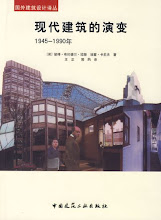A presentation made at the GENIUS LOCI: PLACES AND MEANINGS conference held at the University of Porto 20-22 April 2016
IMAGO URBIS: ROME'S RECURRING DREAM
The genius loci of a city is a complex phenomenon to describe but within the context of Rome it offers the opportunity to read contemporary life through the lens of the past, and the metaphors it gathers.
Paradise
The attempt to capture the eternal should not be confused with historicism. The intrusion of modernity, paradoxically represented in Rome by the presence of the Altare della Patria represents a rupture in that continuity in whatever forms it is dressed. As a result, the aspiration to regain the condition of an urban paradise can only be provisional since we have knowledge of its limits, its subjectivity and its likely ruin.
Grave
The archaeology of place amplifies meaning. The concept of reburying sites that have been excavated evokes the autonomy of the subterranean city, existing for its own purpose, in its own time and anticipating its discovery. The landscape of the ground diminishes the significance of the present in relation to the past and the future of the city.
City
The eclecticism of the city’s architectural languages between the ancient and the modern, represents the diversity of its lives. As order and disorder, formal and informal it embodies a balance between the social and the aesthetic which is only resolved in its complementarity. This variety need not be masked as it represents the very essence of urbanity and contrasts clearly with its opposition to nature.
Wilderness
The natural condition threatens to overwhelm architectural and urban order at every turn, offering the prospect of decay as the destiny of the man-made environment. Resisting this process is the fundamental situation that brings architecture into being, its necessary precursor and conclusion, humanity’s organic desire to make sense of the world through place.
The coexistences of these meanings, their erasures and their interpretations in the multiple matrices of Rome present a model through which the familiar but imprecise term genius loci might be illuminated and extended.
Wednesday 27 April 2016
Subscribe to:
Posts (Atom)





